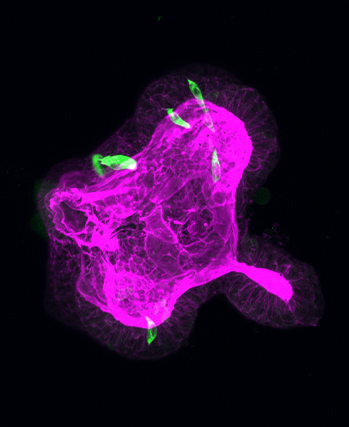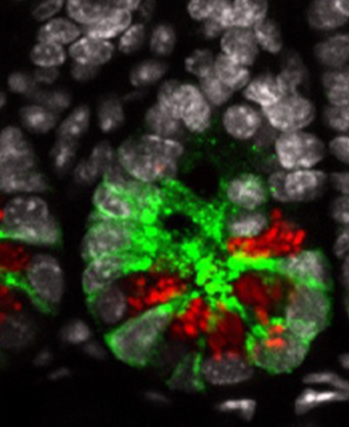Sustaining and generating mechanical forces is a normal part of life for the tissues in our body. For example, epithelial cells line the internal surfaces of many of our organs and tissues must maintain barrier function while sustaining mechanical loads. This study used AFM indentation to characterize how epithelial layers respond to mechanical indentation. He showed that the formation of specialized intercellular adhesions, called adherens junctions, lead to the emergence of a tissue level tension in cell monolayers. Disruption to the actin cytoskeleton or cadherin mediated adhesion resulted in a reduced tension and compromised the ability of these simple tissues to sustain mechanical loads. Future work will focus on the role of other intercellular adhesion proteins and the interface to the extracellular matrix in determining tissue mechanical strength and prestress, that could be critical for our understanding of diseases of tissue fragility.
Holding together to share the load
Research Area: Tissue Microstructure, Biophotonics and Image Analysis
https://doi.org/10.1242/jcs.142349
Authors: Andrew R. Harris, Alicia Daeden, Guillaume T. Charras
Related Articles

Publication
BMP signaling in the intestinal epithelium drives a critical feedback loop to restrain IL-13-driven tuft cell hyperplasia
Although Helminth infections are prevalent throughout the world, they are particular a health...

Publication
LSD1 represses a neonatal/reparative gene program in adult intestinal epithelium
After birth, the epithelium that lines our gut transitions (or matures) so that it can deal...
Publication
Targeting mRNA binding proteins to respond to stress responses
The paper establishes the phosphorylation of heterogeneous nuclear ribonucleoprotein A1...